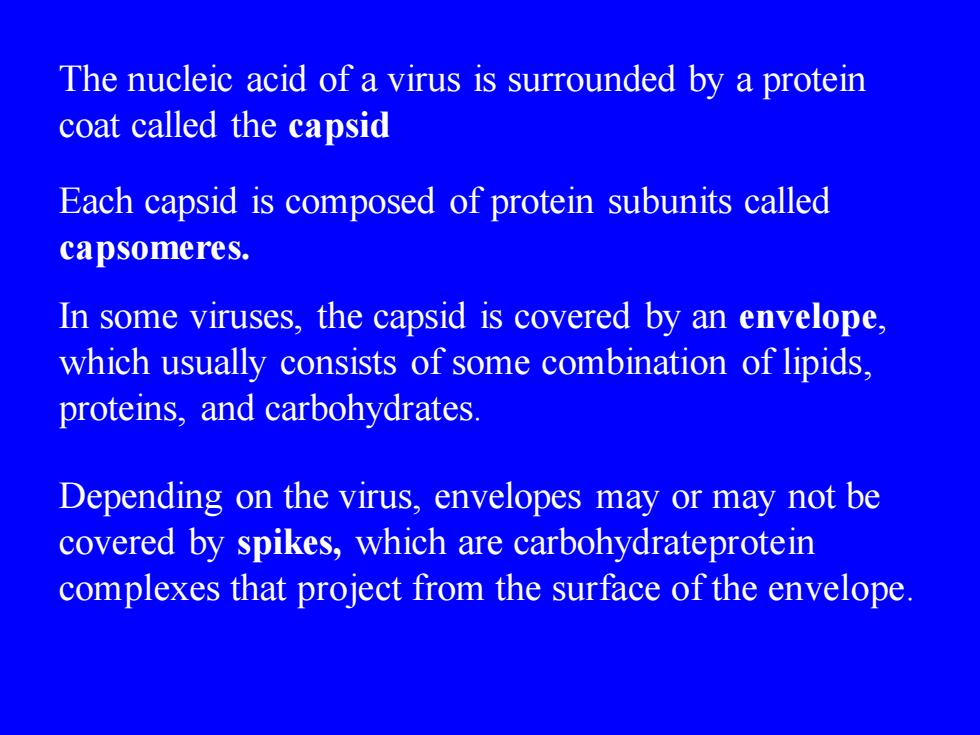正在加载图片...

The nucleic acid of a virus is surrounded by a protein coat called the capsid Each capsid is composed of protein subunits called capsomeres. In some viruses, the capsid is covered by an envelope, which usually consists of some combination of lipids, proteins, and carbohydrates. Depending on the virus, envelopes may or may not be covered by spikes, which are carbohydrateprotein complexes that project from the surface of the envelope.The nucleic acid of a virus is surrounded by a protein coat called the capsid Each capsid is composed of protein subunits called capsomeres. In some viruses, the capsid is covered by an envelope, which usually consists of some combination of lipids, proteins, and carbohydrates. Depending on the virus, envelopes may or may not be covered by spikes, which are carbohydrateprotein complexes that project from the surface of the envelope